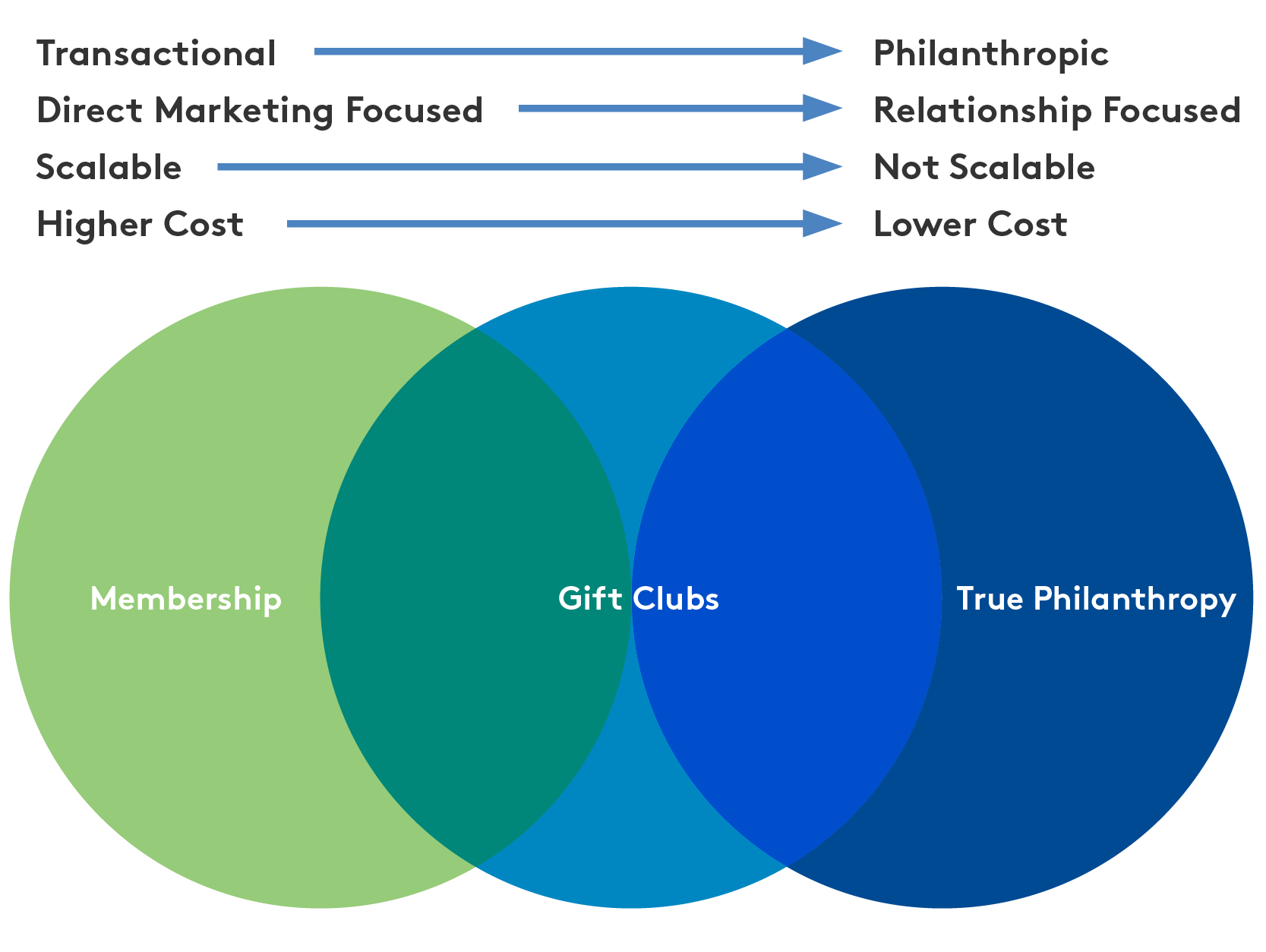Related Articles
Subscribe to the Greater Public newsletter to stay updated.
This site is protected by reCAPTCHA and the Google Privacy Policy and Terms of Service apply.

Whenever I talk to leaders in other nonprofit industries about fundraising for public media, they tell me how lucky we are. They understand that our supporters – the people who love and give to public media – are truly the stuff of envy. Our fans proclaim their adoration on tote bags, in dating apps, in conversations with friends and family, and by becoming members. More than half of public media donors are sustaining members; they give year after year. This percentage is head-and-shoulders above the share of sustainers that can be claimed by other nonprofits. Not surprisingly, overall retention among public media donors is also significantly higher than the national index.
Public media has nearly perfected the model of raising money from a large swath of people who love what we do. Our central strategy has historically relied on the fact that our supporters engage with us everyday, all day long on our airwaves. When we want them to give, we don’t have to go far to get their attention. We simply go on-air and ask. These donor interactions are straightforward and transactional. And they deliver.
Like I said, the stuff of envy! Of course, our greatest strengths can conceal our greatest weaknesses, or, as I see them, our greatest opportunities.
The membership success of public media is tremendous. But membership makes up just one piece of the individual giving pie. We’ve known for years that the future strength of this revenue source is uncertain as broadcast radio-listening habits change. We’ve also long known that other nonprofits are investing in areas of individual giving that have lagged for us: “gift clubs,” which are mid-level donor programs that deliver well-defined benefits to the donor, and philanthropy.
We have the opportunity to elevate the performance of public media’s full continuum of individual giving programs from membership to gift clubs to major giving. Successful membership is just the beginning. In order to fully connect with all of the ways our donors want to have an impact, our fundraising programs must consistently develop relationships with potential top donors, inspiring and challenging them to give in greater ways.
Right now, most public media giving programs are not set up to seize this opportunity.
The most common model in public media is a robust membership program that moves donors into a major giving portfolio once their giving reaches $1,000 a year. These donors are actually giving mid-level gifts, and should be considered gift club members. Gift clubs offer donors recognition and transactional benefits. They nurture loyalty and move donors along the giving continuum, signaling their desire to engage more fully with the organization.
Most of our nonprofit peers start their major giving programs at $5,000 or more. Trying to cultivate major gifts while responsible for retaining and renewing mid-level donors presents a simple capacity problem. Major donor cultivation is relational, not transactional. A model that focuses major giving staff on donors giving $1,000+ in an industry as successful as public media results in limited time to build deeper relationships with those donors who can and would give much more. There are just too many mid-level gift club donors to serve.
 Our donors want to do more. It’s up to us to give them that opportunity. So why aren’t we capitalizing on major giving’s potential?
Our donors want to do more. It’s up to us to give them that opportunity. So why aren’t we capitalizing on major giving’s potential?
One reason is that we do what we do so well! Our relative success with membership has rooted our goal-setting, by force of habit, in the $10-to-$100-a-month space. It has gotten us to where we are today. But our success has also humbled our aspirations.
We must structure our programs to give them the chance to succeed. This requires fully implementing the use of gift clubs at every organization as a step toward building a true major giving program. Leaders must also look at where development budget, staff time, and decision-making power is concentrated and have the courage to direct resources to fulfill the promise of gift clubs and major giving.
We must reject our plateaued thinking about what constitutes major giving. It’s not $1,000 a year. It starts with the potential to give $5,000-$10,000 on an ongoing basis. All public media organizations must become equipped to regularly pursue six- and seven-figure asks because these are the gifts our supporters are ready to make.
We must approach individual giving holistically, not as separate sources of revenue that deliver on short-term goals, each month, each drive. Our programs must work in concert with one another to move donors toward greater giving, allowing them to have greater impact. We must embrace a singular goal of urging each donor to fulfill his/her potential. If that means the revenue source moves out of one department’s portfolio and into another’s, then this movement is a colossal win for any organization.
When we structure our giving programs appropriately, we allow ourselves to truly embrace donor-centered fundraising. We must place the donor’s interests first, not ours. We must make our asks when they’re ready, not when we need the money. We must cultivate deep, meaningful relationships with major donors to connect with their passions and true philanthropic potential.
These shifts are a necessity, but they’re hard to make – and even harder to fund – at any one organization. This is why Greater Public has launched the Transformational Major Giving Pilot in collaboration with the experts at Veritus Group. This ambitious two-year program seeks to substantially increase revenue among a few stations in order to develop a model that can be scaled to every public media organization around the country.
Membership is where public media fundraising discovered its brilliance. Every donor starts here. But it is not an end-point. And it can’t be where the vast majority of our individual giving energy resides. Our donors want more from us. They love what we do. They will find ways to realize their dreams of giving big with transformational impact. Let them realize their dreams by giving to public media!

New to Greater Public? Create an account.